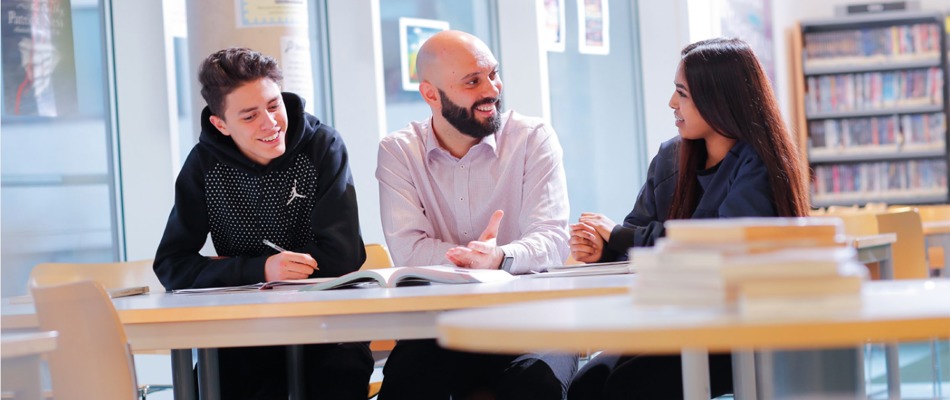How much classroom diversity should there be?
Back
This piece was originally published on Becky's blog here last month.
In our forthcoming book, The Next Big Thing in School Improvement, we have a chapter where we talk about how diverse teachers are in their beliefs, motivations and instructional practice. We decided not to write a great deal about how much diversity in teaching we felt was optimal, but it is a conversation I have repeatedly with people so wanted to put forward a case for upholding diversity in teaching practice.
I think there is a naive case that there is a single thing called optimal instructional practice and that therefore all teachers should do it. It goes something like this. We know that individual students have a great deal in common in the way they learn. We all have brains that are wired in similar ways, learning styles have been debunked, even interventions for specific cognitive difficulties are often the same as instructional approaches that are effective for everyone. Therefore, we should be converging on a single instructional approach.
I somewhat buy into this view, although I’m sceptical that we’ll know what this ‘best way’ is in my lifetime. But assuming we did find it, it would likely tell us how to instruct a motivated learner in isolation, such as someone studying on an online learning platform. In these circumstances, it seems we might be able to develop an optimal route that allows us to take everyone through a curriculum effectively via common pedagogical approaches. Of course, some might move faster or slower, might need more repetition or worked examples, etc… but one approach really could suit all.
However, teachers don’t work with isolated, motivated learners. They work with a class. And this is where it gets complicated. So far, my co-author Matthew and I have managed to come up with seven reasons why we believe in diversity. (And I suspect you’ll think of more.)
First, teachers are unique in their qualities – their abilities to manage behaviour in a class, their abilities to motivate, to develop particular types of relationships, to explain concepts well, to judge the best pace at which to move forward. These unique personality traits and capabilities determine how they feel most comfortable interacting with students. I can’t see us ever developing a system that requires teachers to teach in ways that make them feel uncomfortable (but happy to have that argument with someone who believes otherwise).
Second, teachers have a set of embedded habits and beliefs about instruction, all of which were developed in a bygone era and that are now so internalised that they are hard to overcome. So, even if we invented the perfect way to teach, re-training the existing workforce in these new practices would lead to a deterioration in instruction for a year or two as we work to re-destroy and re-create each teacher’s automaticity in classroom practice.
Third, subject, class dynamics and social circumstances affect which types of instructional approaches are most effective at any point in time. As we walk around a school, we should expect to see different types of teaching, depending on the subject, age and background of the children in the class. For example, group work is often ineffective where teachers are inexperienced or students are difficult to control and keep on task. This might mean that group work is inferior to individualised student work, on average, but it doesn’t mean it is inferior in all circumstances.
Fourth, the group nature of instruction means that teachers constantly need to reconcile the competing needs of each of the 30 students in their class. Instructional choices are often about trade-offs, with value judgements about whose needs to attend to most at any point in time. Where there are value judgements that have not been made explicit (for reasons we write about in our book), different teachers will inevitably make different choices about what it is best to do. And because we aren’t very good at expressing these divergent beliefs about what we are trying to achieve with our classes, instead the arguments get expressed in terms of preferred pedagogies.
Fifth, in our book we talk about how diversity in the schooling system helps mitigate the impact of poor centralised policies. In our world where we (currently) haven’t established optimal instructional practices for all circumstances, allowing diversity of instructional approaches insures us against the worst excesses of bad, centralised mandates (from government or heads) about what constitutes good teaching.
Sixth, if we don’t yet know how to teach most effectively, then diversity allows innovation to flourish. Perhaps the combined local knowledge of teachers, muddling through and learning from each other, trumps the collective knowledge of ‘what works’! Teachers learn by experimentation and mistakes (as do people in other ill-defined fields), so uniformity may be optimally efficient in the short term, but not dynamically efficient in the long term. Serendipity arises from chaos.
Finally, scaling up an ‘effective approach’ so that it is employed across a child’s lessons may reduce the impact of such an approach, for some of its original effectiveness might well have arisen due to its novelty. As humans we are energised by diversity in experiences; it makes life more interesting. And what could be more interesting for pupils than encountering a nice mix of instructional experiences as they pass through their 2730 days of schooling?
We might well work out the optimal way to learn a topic one day. But even if we do, we may never agree on the optimal way to teach it to our classes.
Becky Allen is an academic and education commentator. She is currently a professor at the University of Brighton, and also works at Teacher Tapp, which she co-founded. The Next Big Thing in School Improvement, written with Matt Evans and Ben White, will be published by John Catt on 22nd October.

